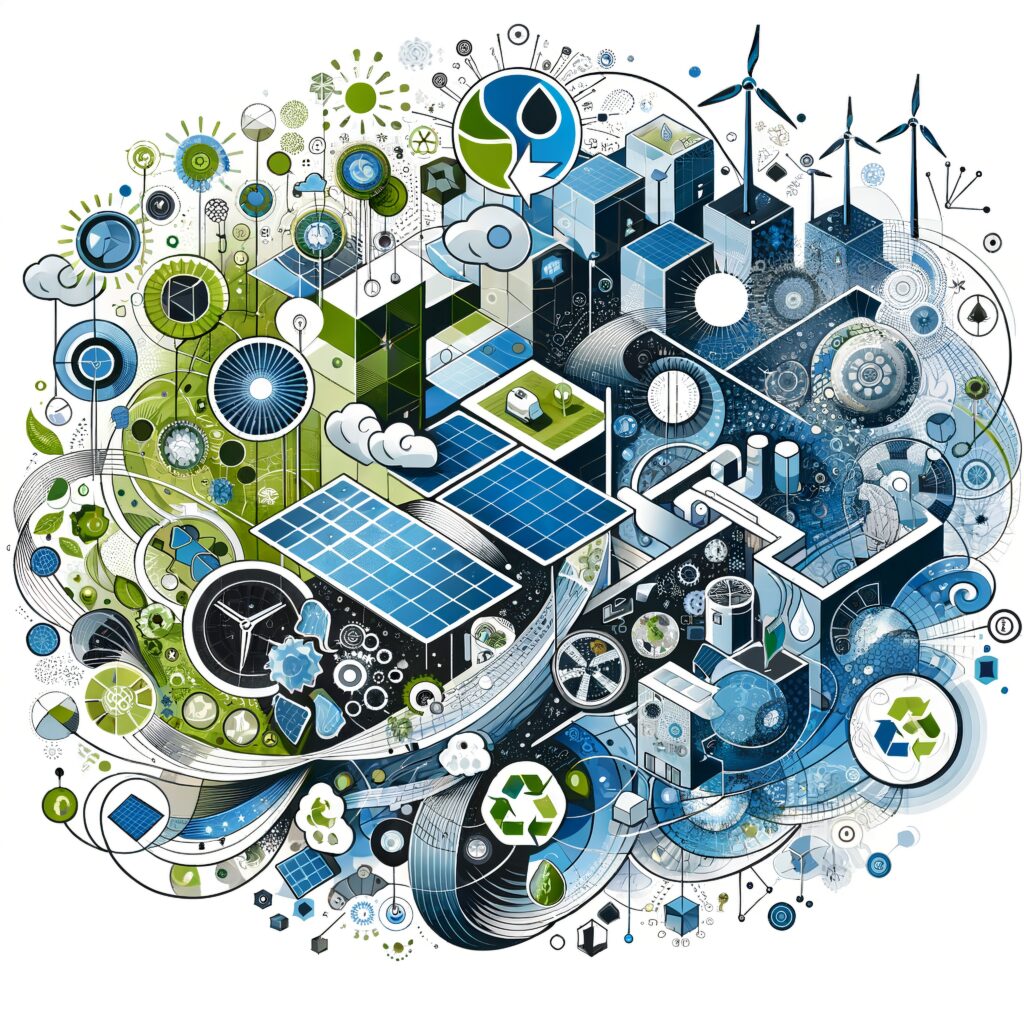We’re getting ready to roll out an entire month (4 blogs in total) of sustainability design themed essays and we wanted to take care with the first one to discuss what the basic premise of Net-Zero design is and some strategies to implement this important sustainable design approach.
Just briefly, Net-Zero Energy, often abbreviated as “NZE,” is a term used to describe a building or system that produces as much energy as it consumes over a specified period, typically on an annual basis. In a Net-Zero Energy building, the energy generated from renewable sources such as solar panels or wind turbines equals or exceeds the energy consumed for all its operations, including heating, cooling, lighting, and electrical appliances.
The Overlooked Specter: Embodied Energy That Shows Up At Your Job Site
Regardless of whether a client is looking to achieve Net-Zero Energy designations, Architects should examine the embodied energy of all materials specified in the production of a building. In Net-Zero Energy design, Architects must include embodied energy in this offset equation. That is, the amount of emission-producing energy used to produce all materials in a given project needs to logged and compared with renewable energy production.
For example, The amount of embodied energy in the production of a Tesla vehicle varies depending on the model and its components. Manufacturing electric vehicles (EVs) like Teslas typically requires significant energy inputs for mining and processing raw materials, manufacturing components like batteries, and assembling the vehicle. However, due to the energy efficiency and reduced carbon emissions associated with driving an EV, they tend to have a lower overall carbon footprint during their lifetime compared to traditional internal combustion engine vehicles.
Net Zero Energy Design: Why Is It Important For Your Construction Project?
Net-zero energy buildings could play a crucial role in reducing greenhouse gas emissions and mitigating climate change by minimizing their carbon footprint and promoting sustainable energy practices. Currently, Net Zero Energy Design is the most aggressive solution to the Climate Crisis but government policy, geopolitical power, the cost of implementation, and other factors make widespread adoption difficult for private enterprise. The specifics of this will be addressed more closely in our upcoming blogs.
Strategies To Accomplish Net Zero Energy For Your Commercial or Residential Project
If you do want to never have to pay another energy bill, then Net-Zero Energy design could be a great fit for your pending residential and/or commercial projects.
Let’s take a closer look at strategies that can help you achieve Net-Zero Energy:
1. Energy Efficiency through Passive Design
One of the foundational principles in designing a net-zero building is prioritizing energy efficiency through passive design strategies. This involves optimizing the building’s orientation, maximizing natural daylight, and harnessing passive heating and cooling techniques. Thoughtful placement of windows, shading devices, and thermal mass can significantly reduce the need for artificial lighting, heating, and cooling, consequently minimizing energy demand.
2. Renewable Energy Integration
To achieve net-zero status, it is imperative to incorporate renewable energy systems into the building’s design. Solar photovoltaic panels, wind turbines, and geothermal systems are viable options for generating clean energy on-site. Integrating these renewable sources into the building’s infrastructure ensures a consistent and sustainable power supply, reducing dependence on traditional fossil fuels.
3. Energy-Efficient Building Envelope
A well-designed building envelope plays a crucial role in achieving energy efficiency. High-performance insulation, advanced glazing systems, and airtight construction help to minimize heat loss and gain. By creating a thermally efficient envelope, the need for excessive heating or cooling is reduced, contributing to lower energy consumption.
4. Smart Building Technologies
Incorporating smart building technologies enhances energy management and optimization. Automated systems, such as energy-efficient lighting controls, occupancy sensors, and smart thermostats, enable real-time monitoring and adjustment of energy usage. These technologies maximize operational efficiency, ensuring that energy is utilized only when necessary.
5. Sustainable Material Selection
The choice of building materials significantly impacts a structure’s overall environmental footprint. Opting for sustainable, locally sourced, and recycled materials can reduce embodied energy and minimize the environmental impact associated with manufacturing and transportation. Additionally, materials with high thermal mass or insulation properties contribute to the building’s energy efficiency.
6. Water Conservation and Management
While the primary focus is often on energy, achieving a net-zero building should also address water consumption and management. Implementing water-efficient fixtures, rainwater harvesting systems, and greywater reuse contribute to overall sustainability. Reduced water usage not only conserves a precious resource but also lessens the energy required for water treatment and distribution.
7. Life Cycle Assessment and Monitoring
A holistic approach to achieving net-zero involves conducting a life cycle assessment (LCA) of the building. This assessment considers the environmental impact of the entire building process, from construction to operation and eventual demolition. Regular monitoring of energy and resource consumption allows for ongoing optimization, ensuring that the building continues to meet net-zero goals throughout its lifecycle.
Net Zero Energy Recap
It doesn’t take a rocket-scientist to see the benefits both on an individual level, and a societal level, how designing a net-zero building can be of benefit. However, it is a multifaceted endeavor that demands a holistic approach encompassing energy efficiency, renewable energy integration, sustainable material choices, and intelligent technologies. It isn’t going to be easy but it will be rewarding. Government subsidies must be a root driver on this if it is going to be widespread and impactful.
In summary, by prioritizing these key strategies, architects and designers can contribute to a sustainable future, where buildings not only serve their intended purpose but also function as responsible contributors to environmental well-being. As we navigate the challenges of a rapidly changing climate, the importance of net-zero design becomes increasingly evident, signaling a transformative shift towards a more sustainable and resilient built environment.
Subsequent blogs will assume this level of basic understanding in our discussions. These aren’t going to be the esoteric essays that so many architects write to flex their knowledge about Trombe walls, specific heat of materials, dew point locations, bio-climatic charts, and other “archi-speak” tangents.
Ervin Architecture can dig deeper with you on these fronts if you elect to pursue Net-Zero Energy design for your residential design project or commercial design project.”




